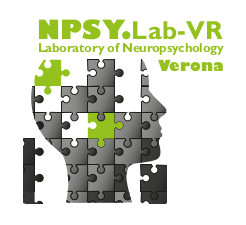Authors Moro V. Abstract The dissociation between implicit and explicit forms of awareness has been described in various neurological diseases. The way in which these forms of awareness integrate in order to permit the necessary unitary experience of self remains…
Categoria: Paper
Massive somatic deafferentation and motor deefferentation of the lower part of the body impair its visual recognition: a psychophysical study of patients with spinal cord injury.
Authors Pernigo S, Moro V, Avesani R, Miatello C, Urgesi C, Aglioti SM. Abstract Embodied cognition theories postulate that perceiving and understanding the body states of other individuals are underpinned by the neural structures activated during first-hand experience of the same states. This suggests that…
Visual body recognition in a prosopagnosic patient.
Authors Moro V, Pernigo S, Avesani R, Bulgarelli C, Urgesi C, Candidi M, Aglioti SM. Abstract Conspicuous deficits in face recognition characterize prosopagnosia. Information on whether agnosic deficits may extend to non-facial body parts is lacking. Here we report the neuropsychological description of FM, a patient…
Phenomenology and neural correlates of implicit and emergent motor awareness in patients with anosognosia for hemiplegia.
Authors Moro V, Pernigo S, Zapparoli P, Cordioli Z, Aglioti SM. Abstract Anosognosia for hemiplegia (AH) is characterized by a lack of awareness of motor disorders and appears associated with fronto-temporal-parietal damage. Neuropsychological evidence indicates that behavioral indices of residual forms of motor awareness…
Cognitive stimulation in a-MCI: an experimental study.
Authors Moro V, Condoleo MT, Sala F, Pernigo S, Moretto G, Gambina G. Abstract Nowadays, preventing the effects of mental decline is an international priority, but there is little research into cognitive training in mild cognitive impairment (MCI). We present the results of a program…
Phenomenology and neural correlates of implicit and emergent motor awareness in patients with anosognosia for hemiplegia.
Authors Moro V, Pernigo S, Zapparoli P, Cordioli Z, Aglioti SM. Abstract Anosognosia for hemiplegia (AH) is characterized by a lack of awareness of motor disorders and appears associated with fronto-temporal-parietal damage. Neuropsychological evidence indicates that behavioral indices of residual forms of motorawareness may co-exist with explicit denial of impairment. Here we explore…
The neural basis of body form and body action agnosia.
Authors Moro V, Urgesi C, Pernigo S, Lanteri P, Pazzaglia M, Aglioti SM. Abstract Visual analysis of faces and nonfacial body stimuli brings about neural activity in different cortical areas. Moreover, processing body form and body action relies on distinct neural substrates. Although brain lesion studies show specific face…
Selective deficit of mental visual imagery with intact primary visual cortex and visual perception.
Authors Moro V, Berlucchi G, Lerch J, Tomaiuolo F, Aglioti SM. Abstract There is a vigorous debate as to whether visual perception and imagery share the same neuronal networks, whether the primary visual cortex is necessarily involved in visual imagery, and whether visual imagery…
Finger recognition and gesture imitation in Gerstmann’s syndrome.
Authors Moro V, Pernigo S, Urgesi C, Zapparoli P, Aglioti SM. Abstract We report the association between finger agnosia and gesture imitation deficits in a right-handed, right-hemisphere damaged patient with Gerstmann’s syndrome (GS), a neuropsychological syndrome characterized by finger and toe agnosia, left-right disorientation…
Mapping implied body actions in the human motor system.
Authors Urgesi C, Moro V, Candidi M, Aglioti SM. Abstract The human visual system is highly tuned to perceive actual motion as well as to extrapolate dynamic information from static pictures of objects or creatures captured in the middle of motion. Processing of…
